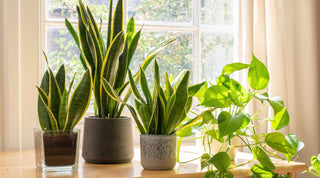Welcome to the enchanting world of ornamental gardening, where the artistry of nature meets human creativity. Ornamental gardening is all about adding visual appeal to your outdoor space through the strategic use of flowers, shrubs, trees, and decorative plants. Whether you have a sprawling lawn or a cozy patio, this guide will help you transform your space into a vibrant, living tapestry.

Understanding Ornamental Gardening
Ornamental gardening goes beyond just planting a few flowers; it's about designing a cohesive and appealing landscape. It involves choosing plants not only for their beauty but also for their form, color, texture, and how they complement the surrounding environment.
Choosing the Right Plants
-
Flowers: The stars of any ornamental garden. Choose a mix of perennials, which come back year after year, and annuals for seasonal color. Consider bloom times to ensure a continuous display of color.
-
Shrubs: These provide structure and a backdrop for your flowers. Evergreen shrubs offer year-round interest, while deciduous shrubs add seasonal color and texture.
-
Trees: Trees are the backbone of any landscape design. They add height, provide shade, and can be a focal point. Consider flowering trees for added beauty.
- Decorative Plants: These include ornamental grasses and other plants with unique visual appeal, such as ferns or bamboo.
Designing Your Ornamental Garden
-
Create a Focal Point: Every ornamental garden needs a focal point, like a striking tree, sculpture, or water feature.
-
Use Color Wisely: Colors can influence mood. Cool colors (blues, purples) create a sense of tranquility, while warm colors (reds, oranges) add excitement and vibrancy.
-
Play with Texture and Form: Combine plants with different textures (such as smooth leaves vs. feathery grasses) and forms (like tall spiky plants with round bushy ones) for visual interest.
- Consider Seasonal Changes: Plan for how your garden will look throughout the year. Incorporate plants that offer autumn color, interesting bark for winter, or early spring blooms.
Maintaining Your Ornamental Garden
Ornamental gardens require regular maintenance to look their best. This includes watering, fertilizing, pruning, and dealing with pests and diseases. Mulching is also important to retain moisture and suppress weeds.
Incorporating Sustainable Practices
Sustainability is key in modern gardening. Choose native plants that are well-adapted to your local climate and require less water and care. Also, consider incorporating organic practices to reduce your environmental footprint.
Ornamental Gardening in Small Spaces
Don't have a large yard? No problem! Container gardening allows you to enjoy ornamental plants on patios, balconies, or even indoors. Use pots of various sizes and heights to create interest.
Conclusion
Ornamental gardening is a rewarding hobby that not only beautifies your space but also provides a sanctuary for local wildlife and a haven for your mental well-being. It's an art form where nature is your canvas, and the possibilities are as limitless as your imagination. So, roll up your sleeves and start transforming your garden into a stunning display of ornamental beauty today!



